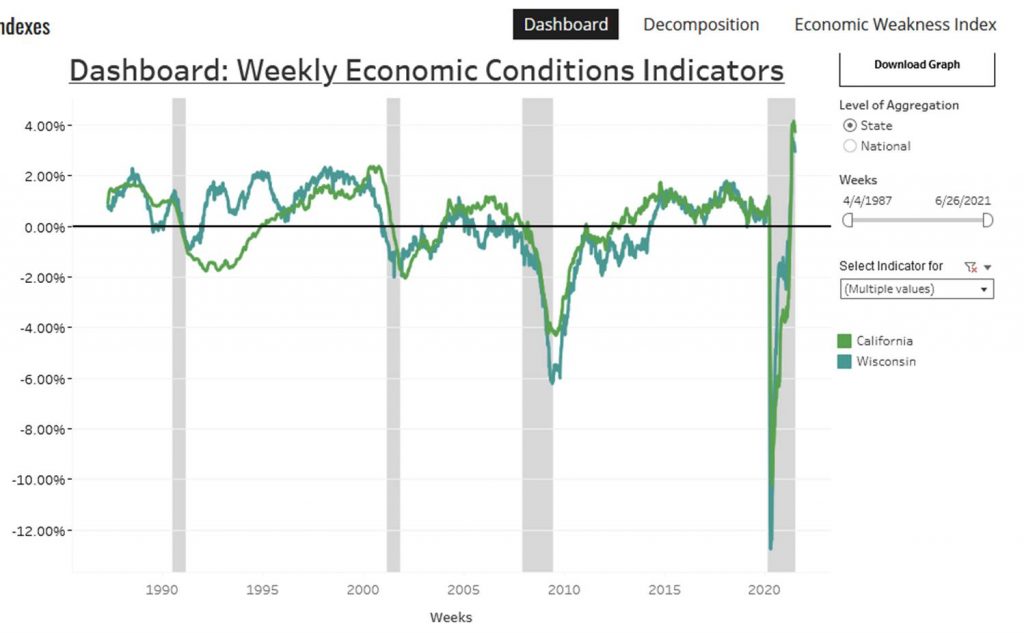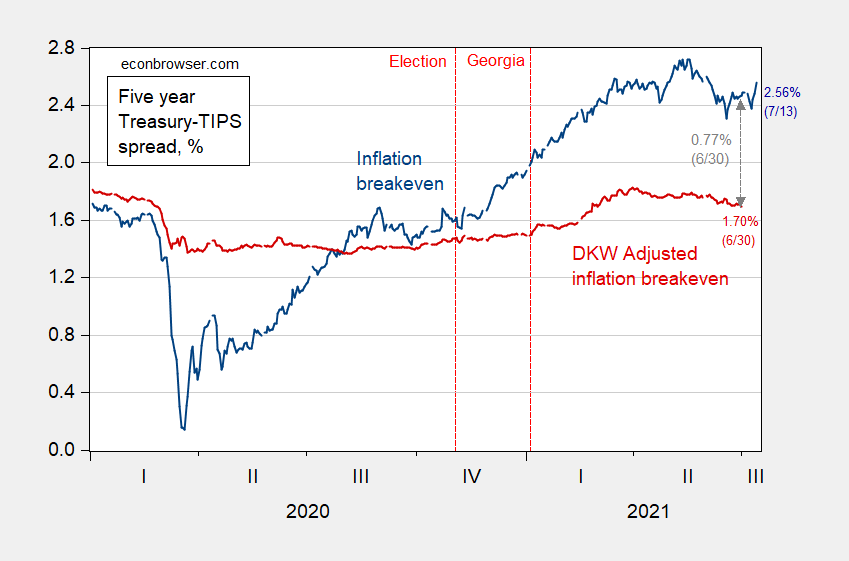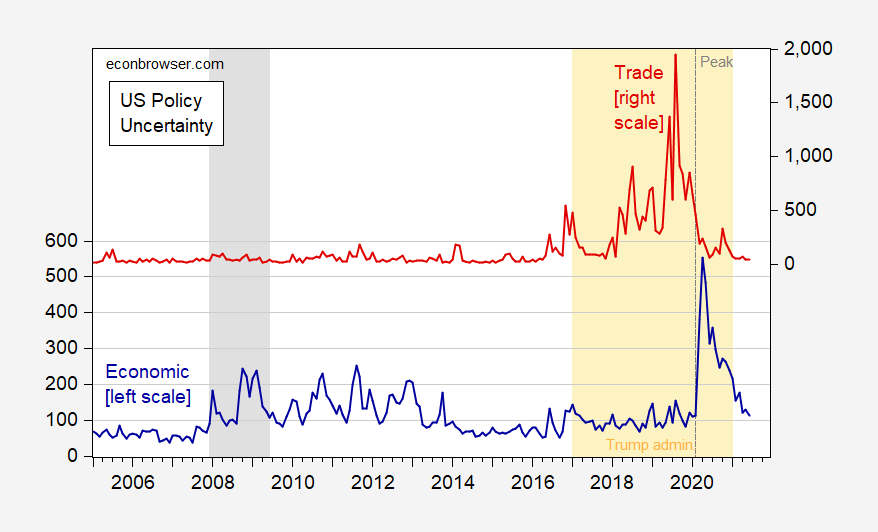Paper by me, Hiro Ito, and Robert McCauley. From the abstract.
“The impact of lockdowns on international trade”
PPI and CPI for June
From Reuters today:
Public Service Announcement: Real Rates Are (Still) Low
If demand is so high, why are real rates so low (even admitting Fed QE, forward guidance, etc.)?
Inflation Breakevens for 5 Year Horizon
As of 7/13:
Figure 1: Five year inflation breakeven calculated as five year Treasury yield minus five year TIPS yield (blue, left scale), five year breakeven adjusted by inflation risk premium and liquidity premium per DKW (red, left scale), both in %; and S&P 500 index (black, right log scale). Source: FRB via FRED, Treasury, KWW following D’amico, Kim and Wei (DKW) accessed 6/4, and author’s calculations.
The 5 year breakeven increased by 8 bps going from yesterday to today (I’m taking the “news” as the CPI surprise discussed here); and remains 16 bps below the recent peak on 5/18. That 8 bps increase is pretty substantial since the standard deviation of daily changes is about 4 bps since 2000 (excluding the extreme movements in 2008).
Inflation!
Reuters – “U.S. consumer prices post largest gain in 13 years; inflation has likely peaked”. Surprises on the upside, put in context. Stripping out volatile components, inflation is up; focusing on sticky prices, inflation is down.
More on weekly state-level economic conditions
Last week Menzie called attention to an interesting new paper by Baumeister, Leiva-León, and Sims on tracking weekly state-level economic conditions. I wanted to add that the authors have also created a really cool data dashboard that allows users to look up the latest economic situation for any individual states and sectors of interest.

The WSJ July Survey of Economists – CPI and GDP Forecasts
The forecasted price level (CPI) has been moved up, as near term expected inflation has increased. Near term GDP growth forecasts upwardly revised, but downside risks remain. Projected output gap small positive at year’s end.
Policy Uncertainty Six Months, A.T.*
* “After Trump” .
Figure 1: US Economic Policy Uncertainty index (news) (blue, left scale), US Trade Policy Uncertainty categorical index (red, right scale), both monthly averages of daily data. NBER defined recession dates shaded gray, NBER peak at dashed line; orange denotes Trump administration. Source: policyuncertainty.com, and NBER.
Part of this decline in uncertainty could be attributable to the economic management team.
Rashomon on E Street, SW
Regarding a report released by the International Trade Commission, The Coalition for a Prosperous America – a pro-protection organization led by a former Nucor CEO/Chairman – notes Government Study Shows Free Trade Deals Produced Little Benefit Except for Multinationals :

